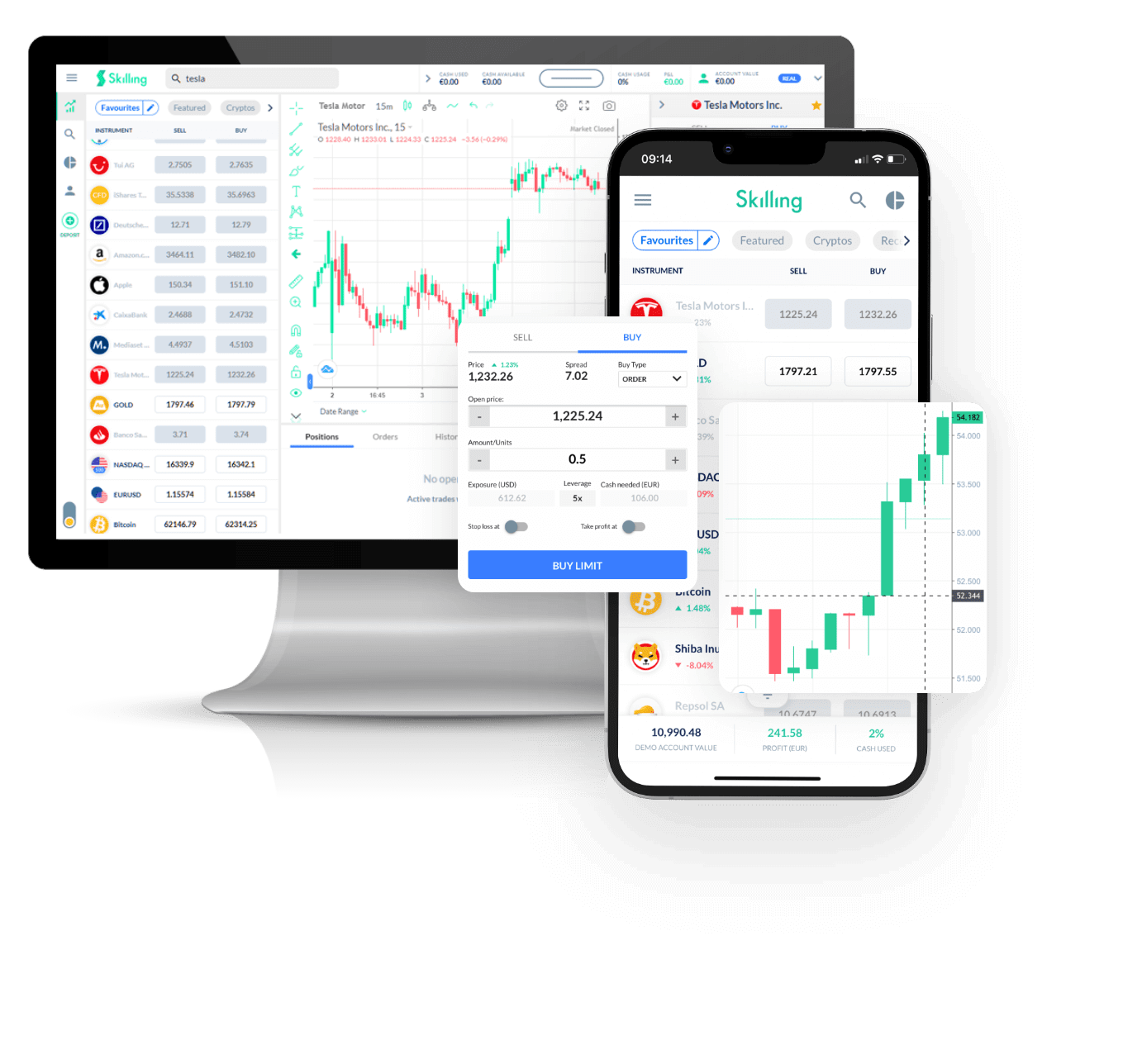Loading...
Copper Price (COPPER): Live Price Chart
[[ data.name ]]
[[ data.ticker ]]
[[ data.price ]] [[ data.change ]] ([[ data.changePercent ]]%)
Low: [[ data.low ]]
High: [[ data.high ]]
Copper price overview
History of Copper
Copper Trading Explained
Copper price overview
History of Copper
Copper Trading Explained
Copper, a vital industrial metal in the commodity market, is renowned for its excellent electrical and thermal conductivity, making it indispensable in numerous industries, including electronics, construction, and manufacturing. Its role extends beyond practical applications; copper is also a significant commodity in the financial markets, often seen as a gauge for economic health.
The copper price per pound stands as a critical metric for traders and analysts. These prices are influenced by a variety of factors, including market demand, mining output, and macroeconomic indicators The price of copper can fluctuate significantly due to changes in supply and demand dynamics, making it essential for stakeholders to stay informed with the most current data.
The Copper spot price is the price at which copper can be bought or sold for immediate delivery. Unlike futures prices, which are based on expected future prices of copper, the spot price reflects current market conditions. This immediate pricing model is crucial for short-term traders and industries that rely on copper for production, providing them with real-time market data.
Copper's historical timeline is quite fascinating and illustrates how integral this metal has been to human development. Its journey begins around 9000 BCE when it was discovered and initially used for making simple ornaments and beads. This marked the first known use of metals by humans.
As civilizations evolved, so did the use of copper. By 6000 BCE, ancient societies in regions like what is today Turkey and Iran started mining native copper. Native copper was ideal for early use because it could be found in pure, metallic form which did not require any smelting, thus simplifying the process of metal fabrication.
During the Industrial Revolution, the demand for copper skyrocketed due to its excellent conductivity, malleability, and resistance to corrosion. Copper became a key component in the production of steam engines, telegraphs, and later, electrical equipment. Its properties were crucial for the development of the infrastructure that powered the Industrial Revolution.
In contemporary times, copper continues to be indispensable across various sectors. It is used in renewable energy systems, as a building material, in electronics, and even for its antimicrobial properties in healthcare environments to help reduce the transmission of pathogens. Copper’s versatility and its role in advancing technology and improving public health highlight its enduring importance in society.
Trading copper, a versatile and widely used metal, involves several methods, including physical trading, futures contracts, and Contracts for Difference (CFDs). For those looking to trade copper through CFDs, platforms like Skilling offer a straightforward way to engage in the market without the need to own the actual physical commodity.
When it comes to trading copper, understanding the fundamentals of supply and demand and price movements is essential. It’s important to recognize the factors that influence copper supply and demand, such as production levels, global economic activity, and geopolitical events.
| Swap long | [[ data.swapLong ]] points |
|---|---|
| Swap short | [[ data.swapShort ]] points |
| Spread min | [[ data.stats.minSpread ]] |
| Spread avg | [[ data.stats.avgSpread ]] |
| Min contract size | [[ data.minVolume ]] |
| Min step size | [[ data.stepVolume ]] |
| Commission and Swap | Commission and Swap |
| Leverage | Leverage |
| Trading Hours | Trading Hours |
* The spreads provided are a reflection of the time-weighted average. Though Skilling attempts to provide competitive spreads during all trading hours, clients should note that these may vary and are susceptible to underlying market conditions. The above is provided for indicative purposes only. Clients are advised to check important news announcements on our Economic Calendar, which may result in the widening of spreads, amongst other instances.
The above spreads are applicable under normal trading conditions. Skilling has the right to amend the above spreads according to market conditions as per the 'Terms and Conditions'.

Trade [[data.name]] with Skilling
Take a view on the commodity sector! Diversify with a single position.
- Trade 24/5
- Tight spreads
- Average Execution at 5ms
- Easy to use platform
FAQs
How is copper traded in financial markets?
+ -Copper is primarily traded on commodities exchanges such as the London Metal Exchange (LME) and the New York Mercantile Exchange (NYMEX). Traders can buy and sell copper futures contracts, which represent an agreement to buy or sell a specified amount of copper at a predetermined price on a future date.
What are the key technical indicators used to analyze copper prices?
+ -Traders often use technical analysis tools such as moving averages, relative strength index (RSI), Fibonacci retracements, and volume analysis to identify trends and potential entry/exit points in the copper market.
What are the trading hours for copper markets?
+ -As of May 21, 2024, the highest price copper has reached is $5.11 USD per pound. This reflects the most recent peak in copper prices up to that date. Copper prices can fluctuate due to various factors such as global economic conditions, supply and demand dynamics, geopolitical events, and market speculation. It's important to note that prices can vary between different commodities exchanges and over time.
Why Trade [[data.name]]
Make the most of price fluctuations - no matter what direction the price swings and without the restrictions that come with owning the underlying asset.
CFD
Actual Commodities
Capitalise on rising prices (go long)
Capitalise on falling prices (go short)
Trade with leverage
Trade on volatility
No commissions
Just low spreads
Manage risk with in-platform tools
Ability to set take profit and stop loss levels

